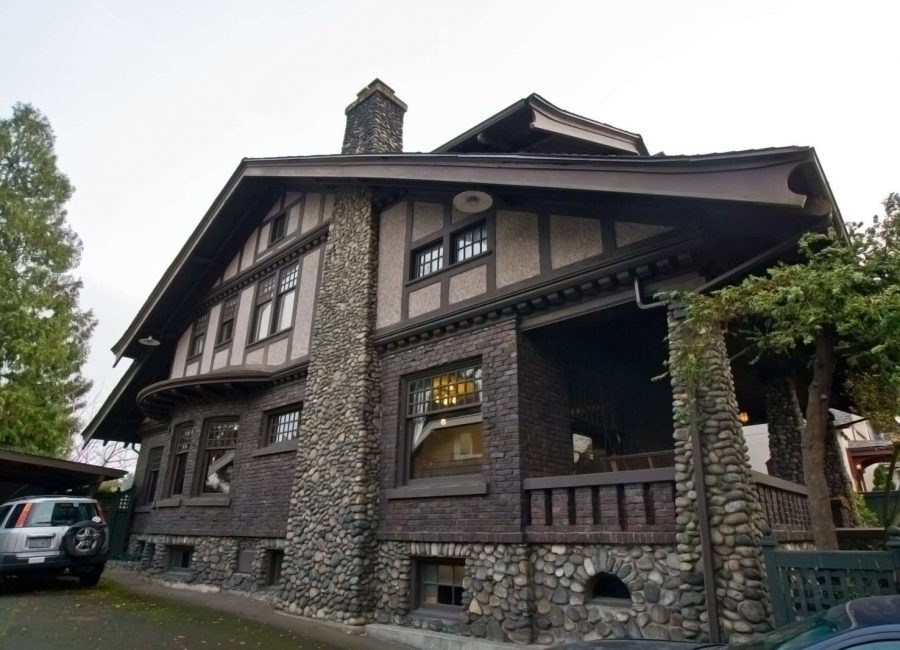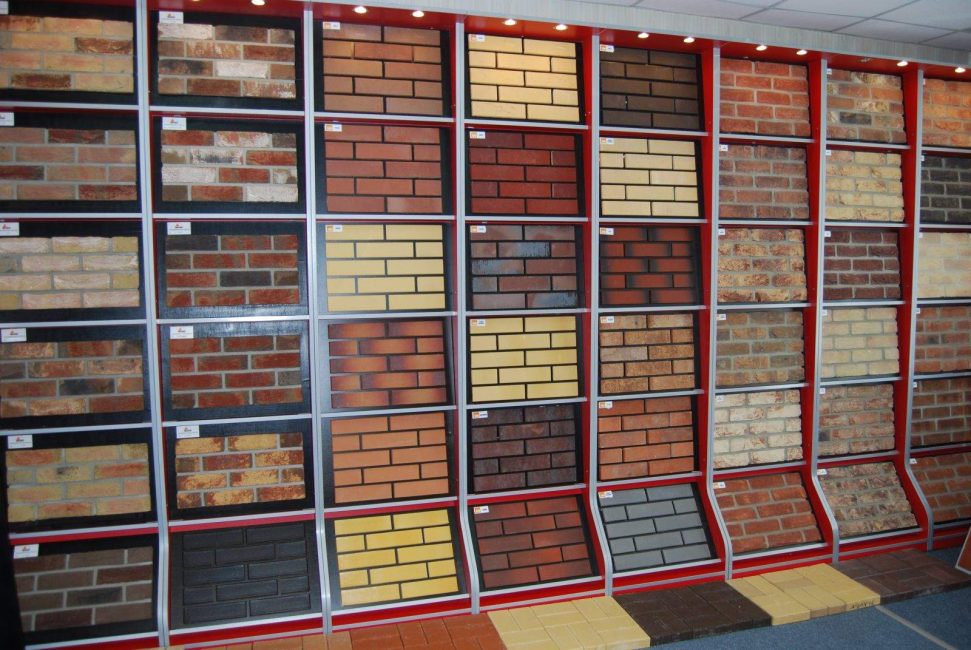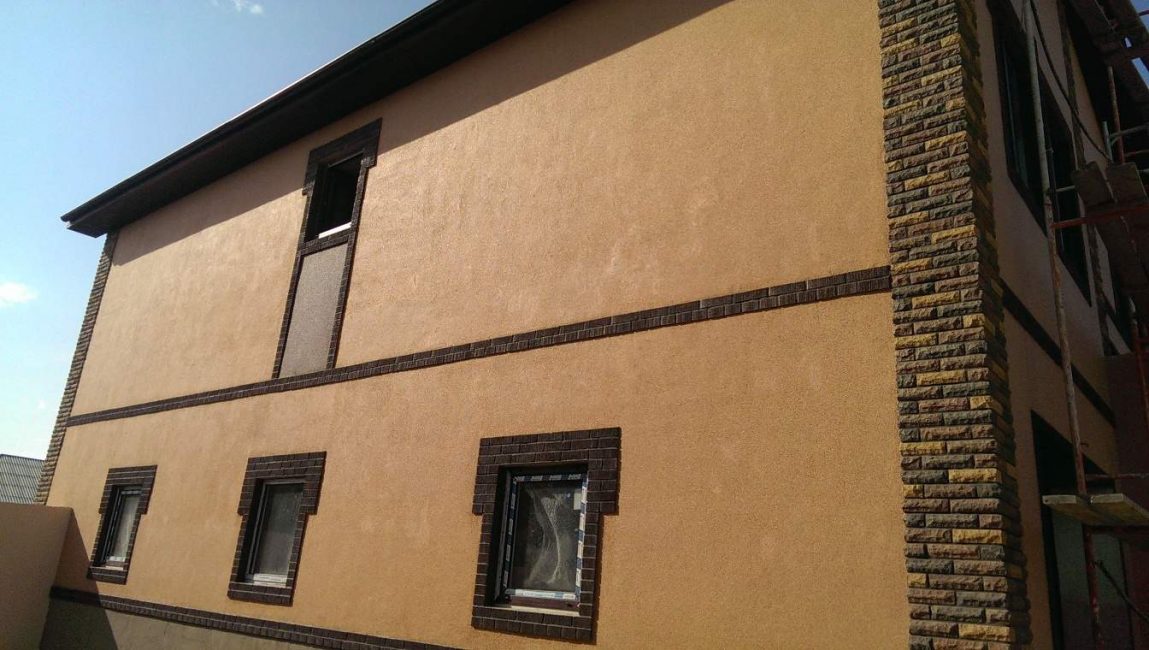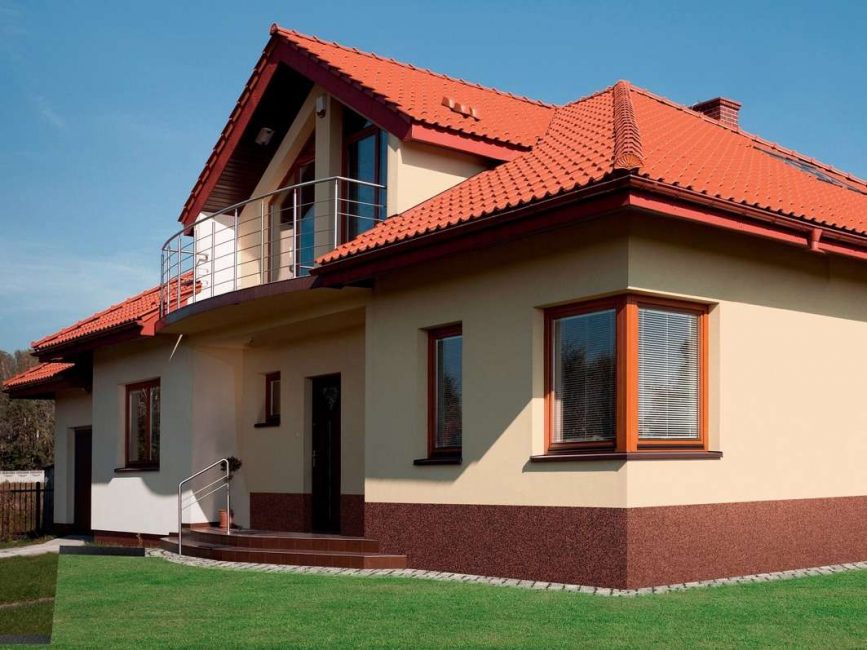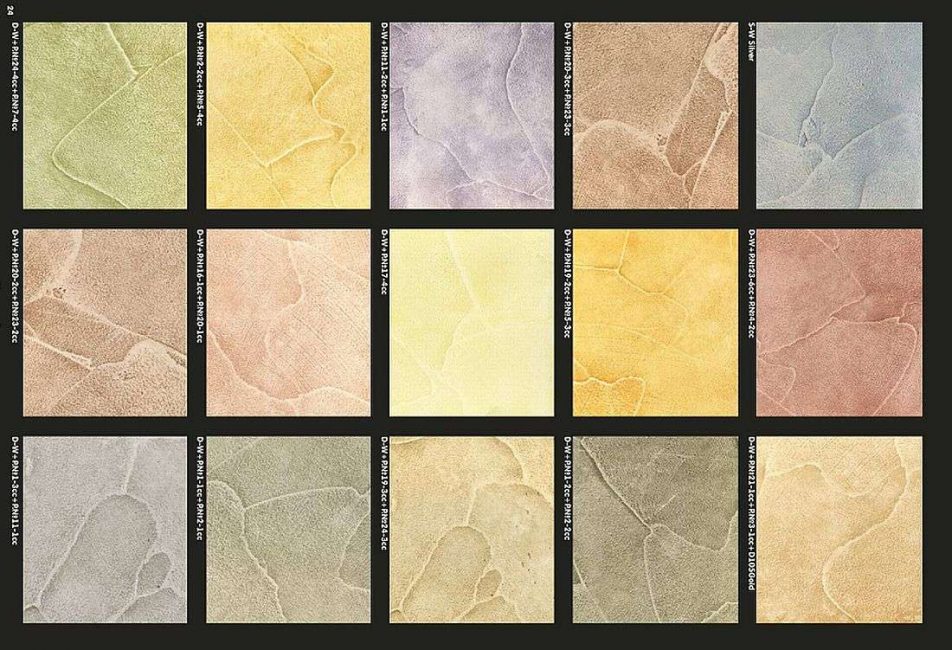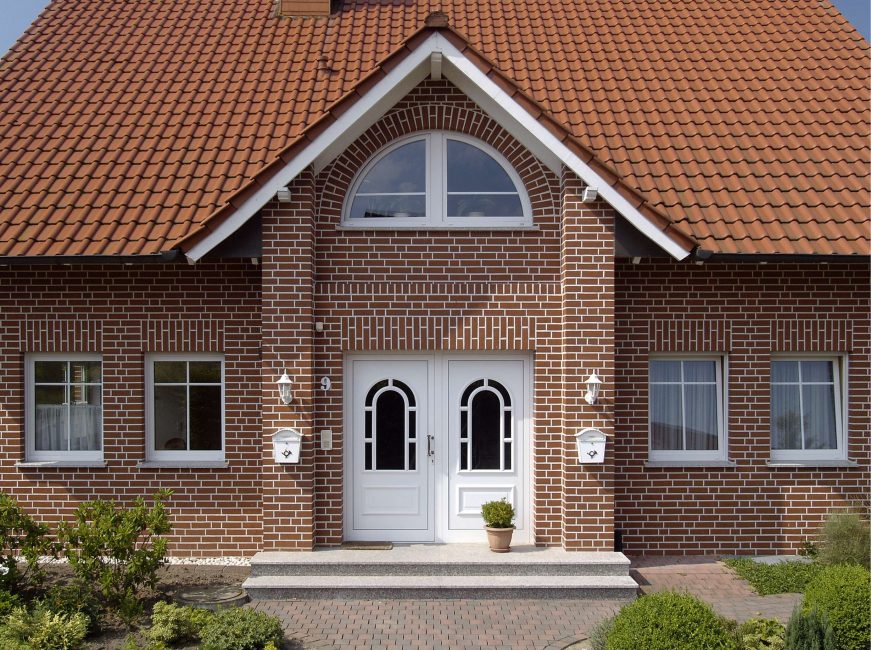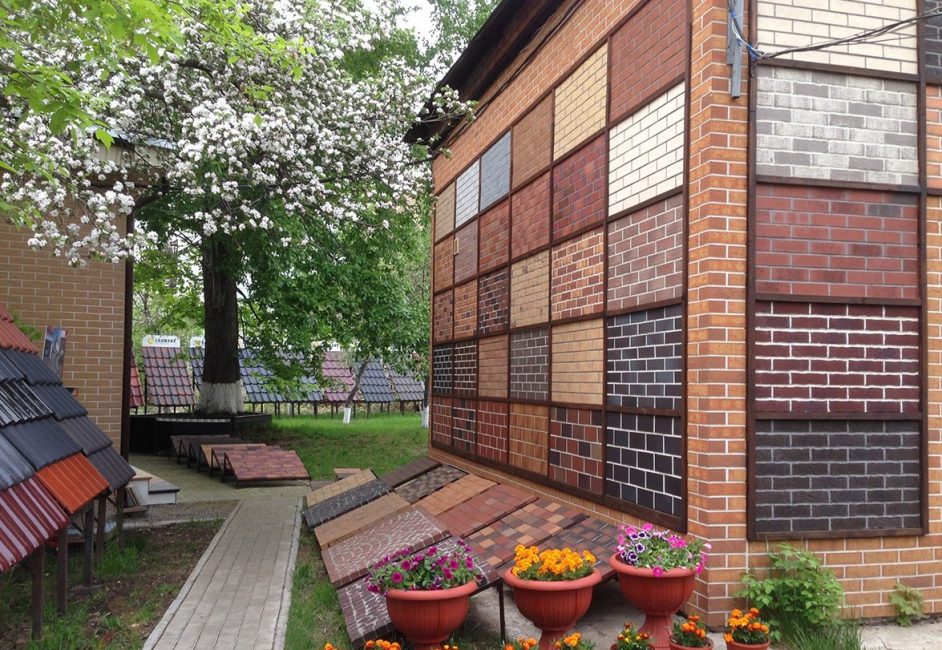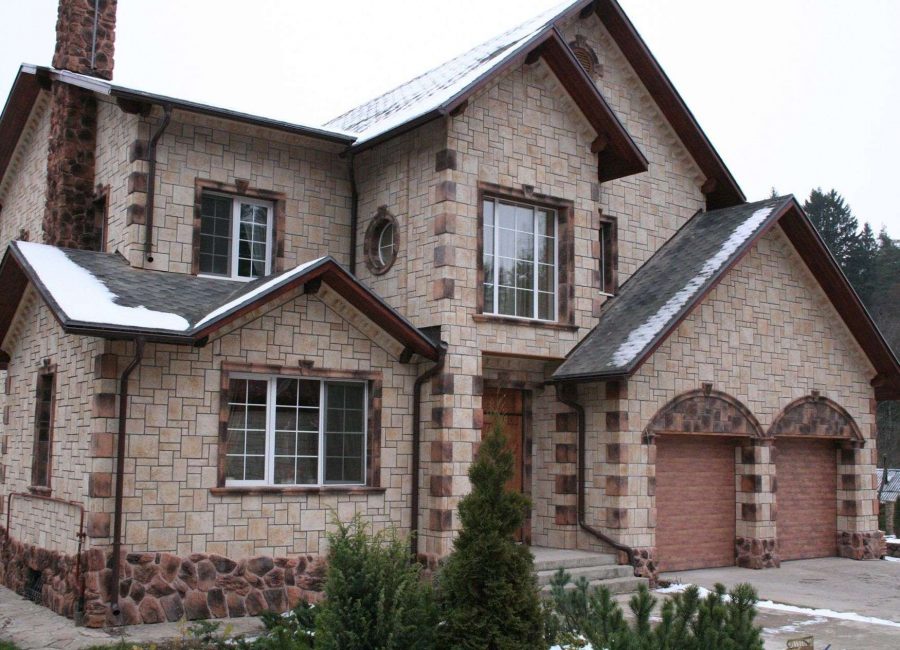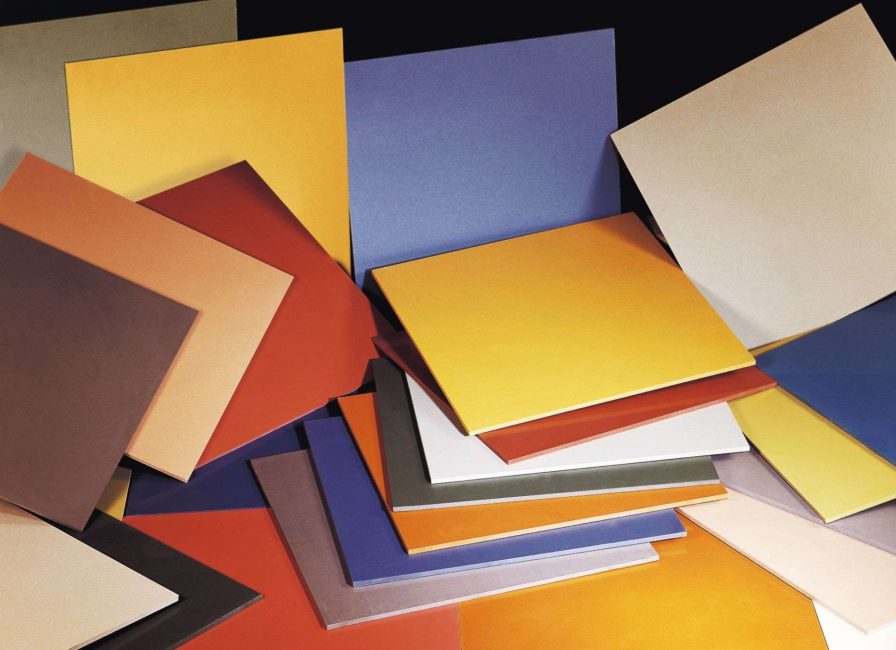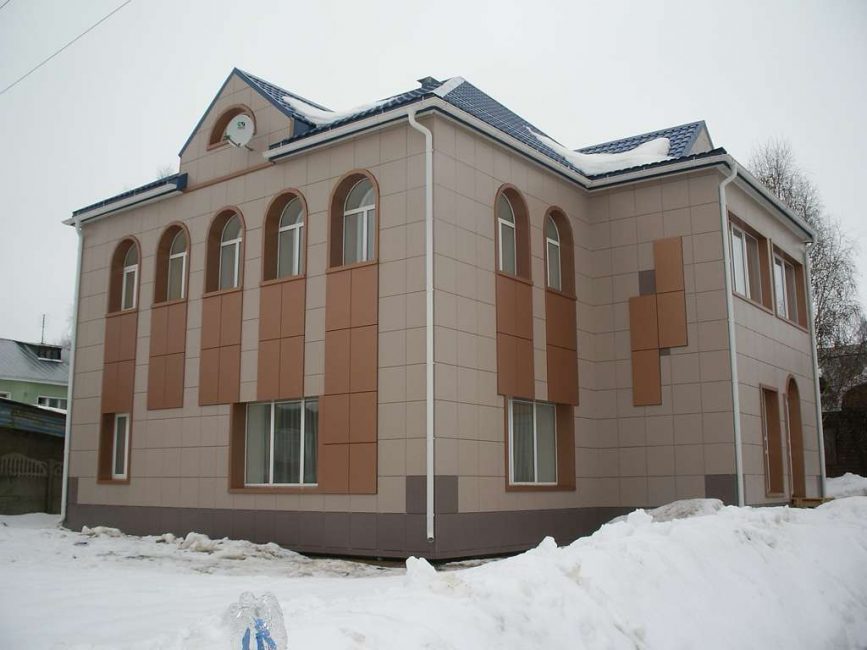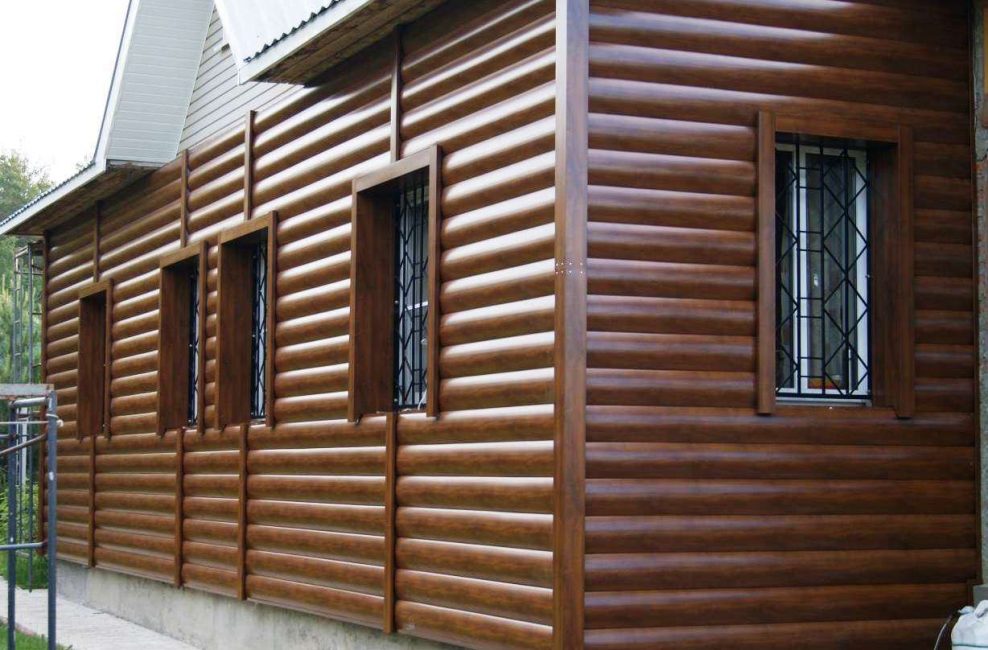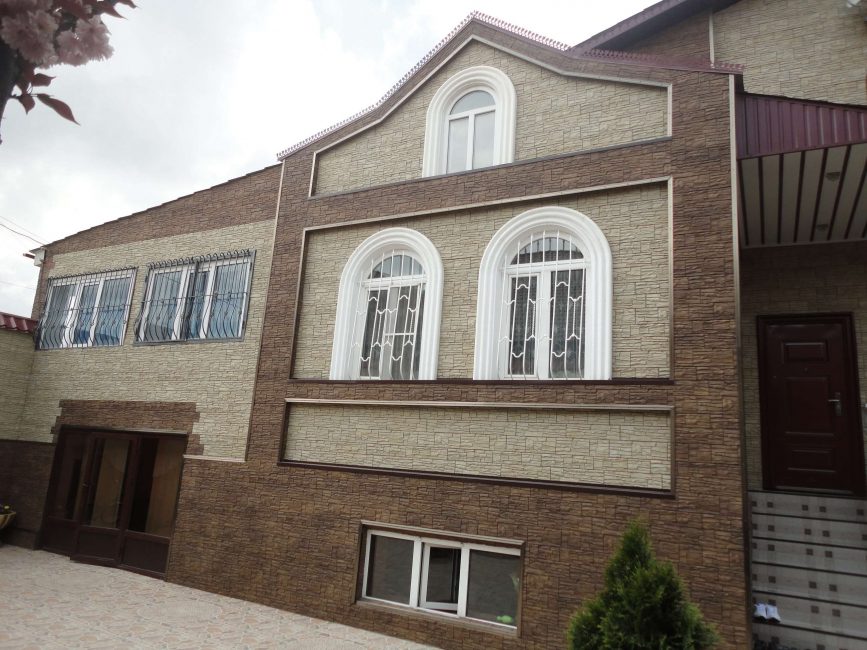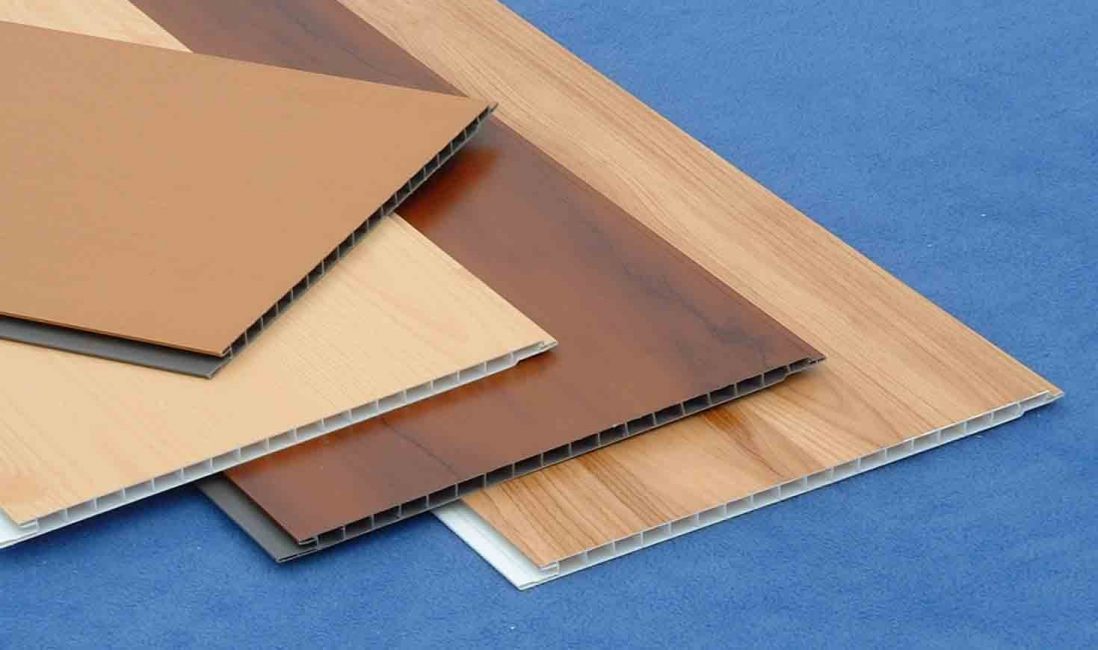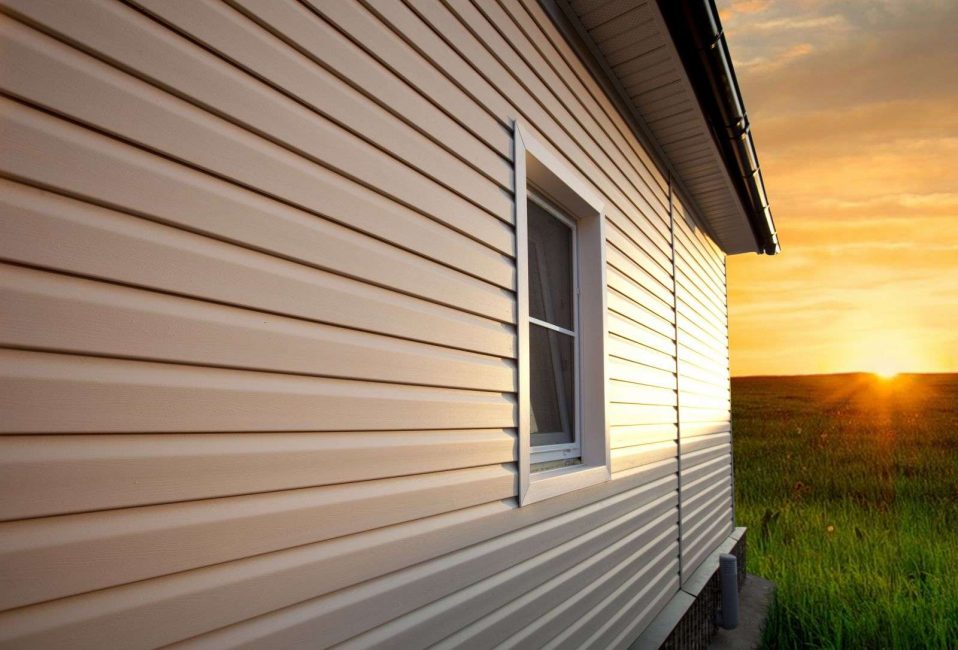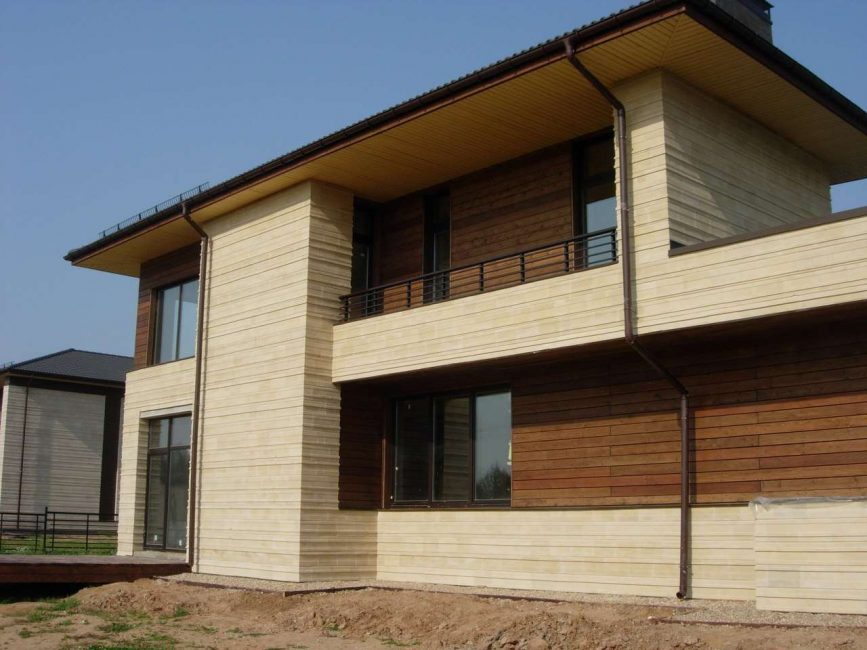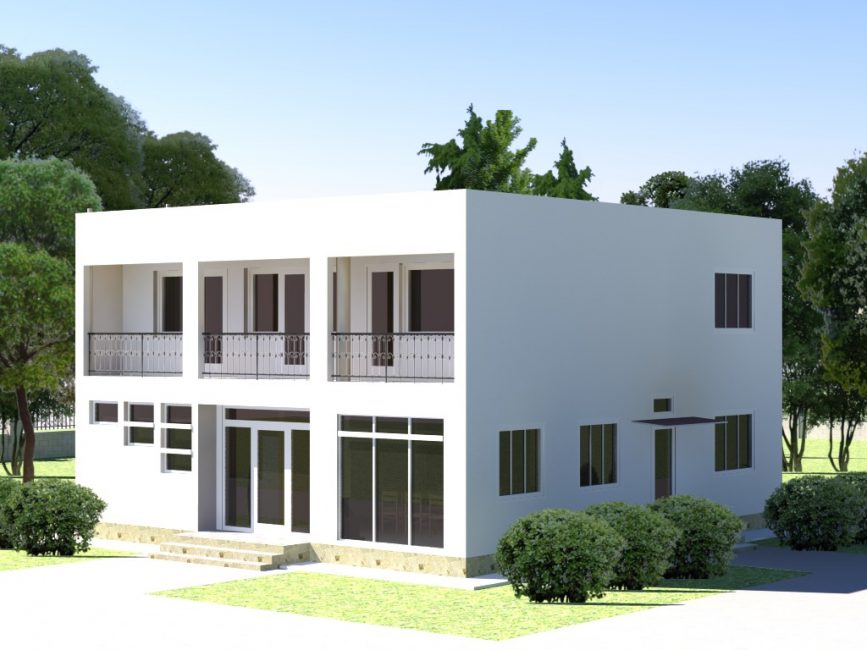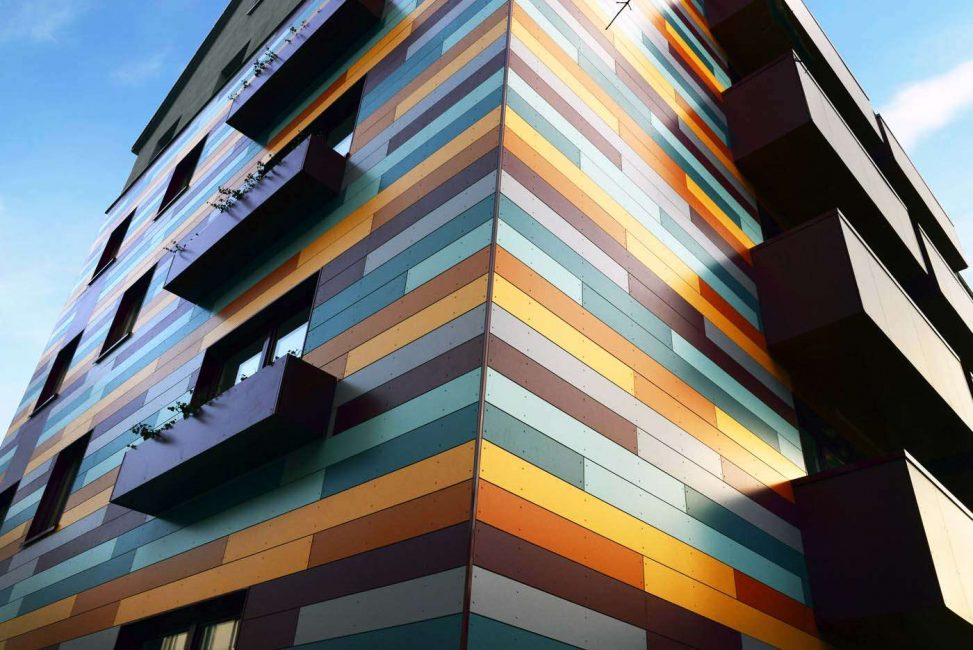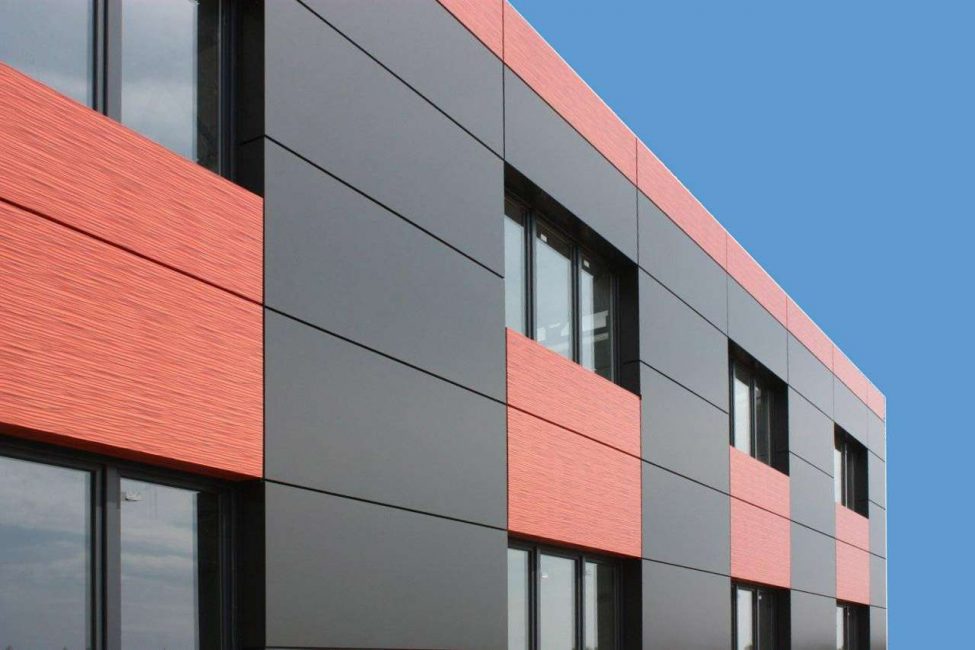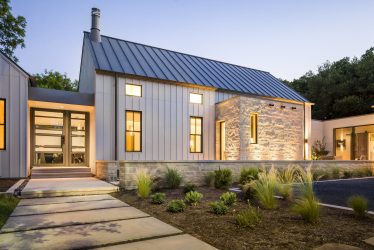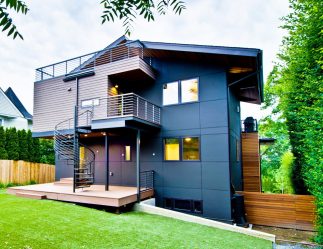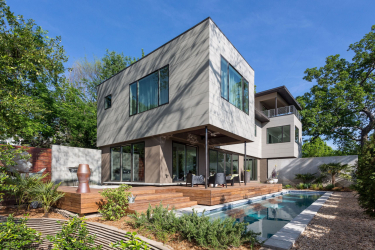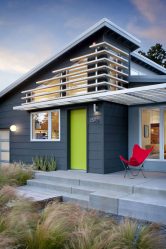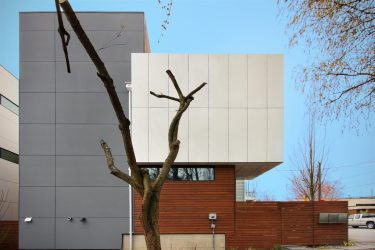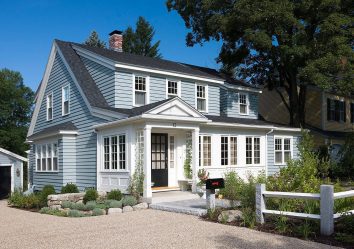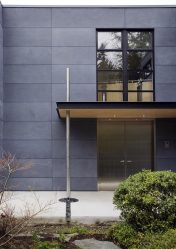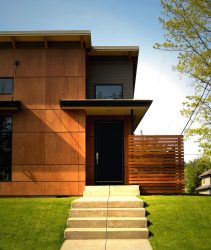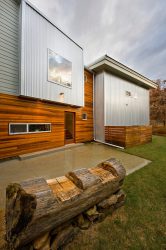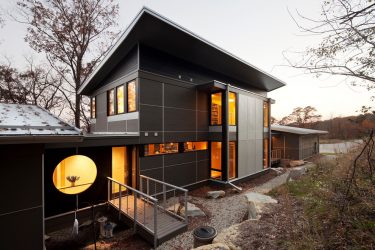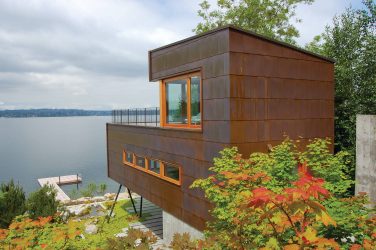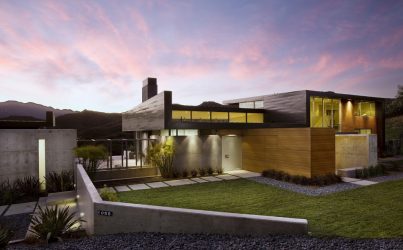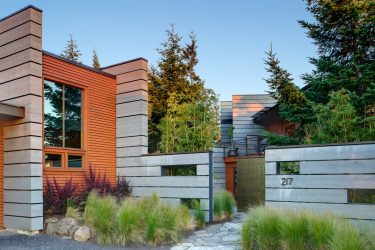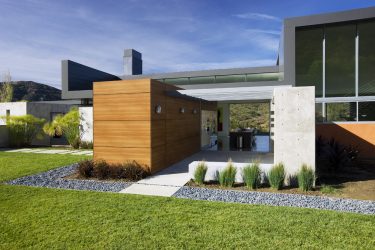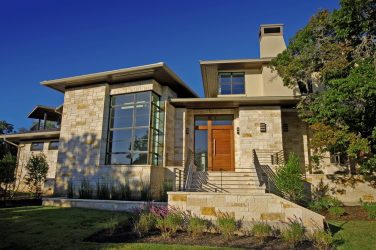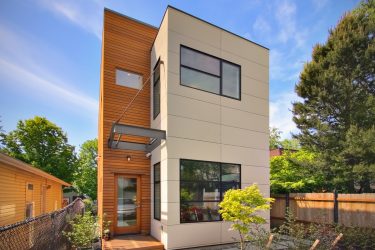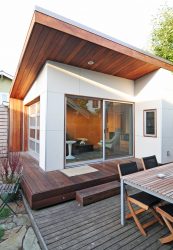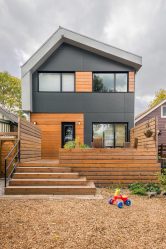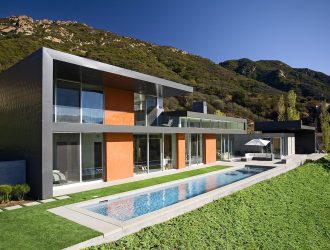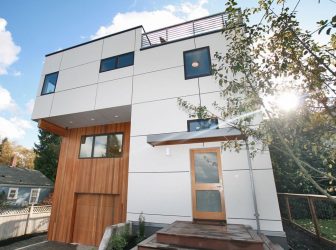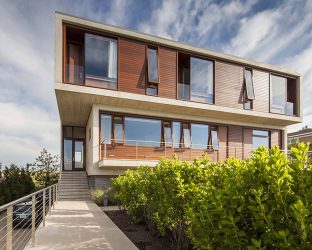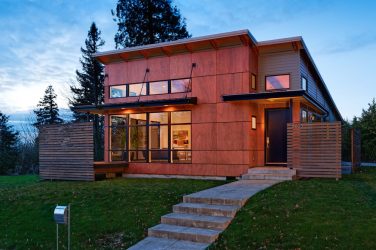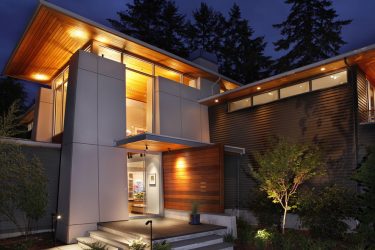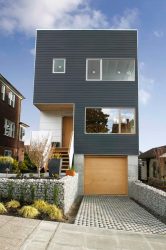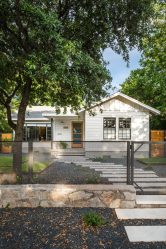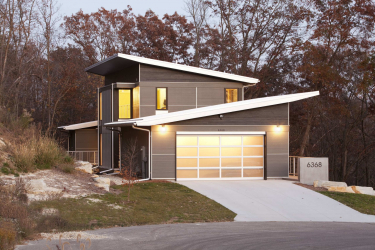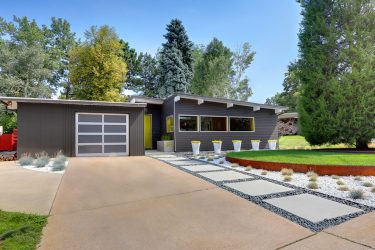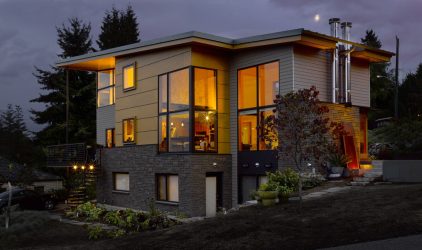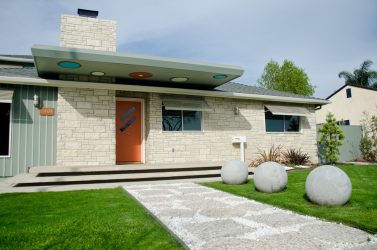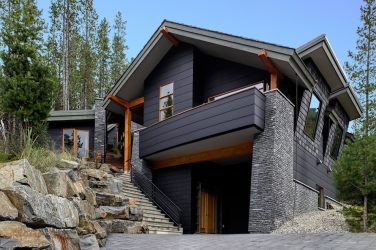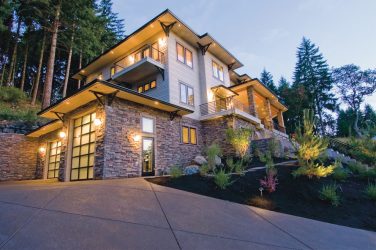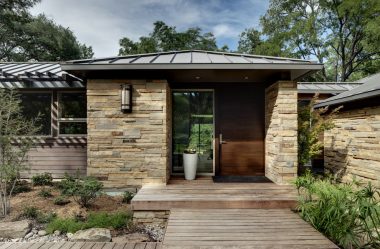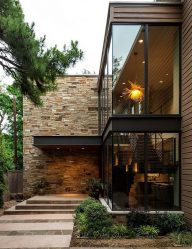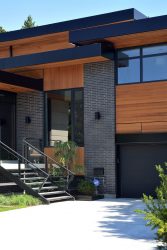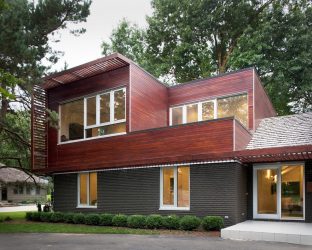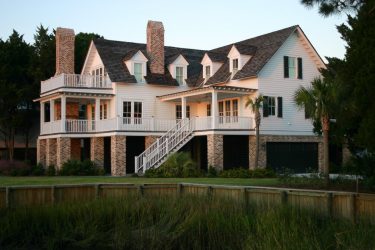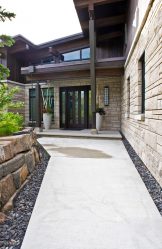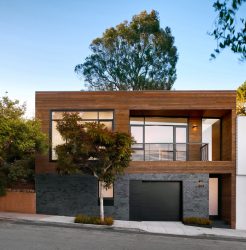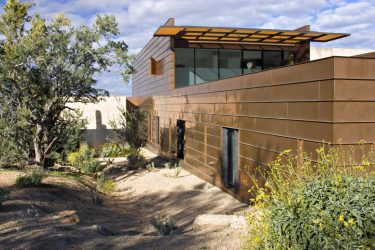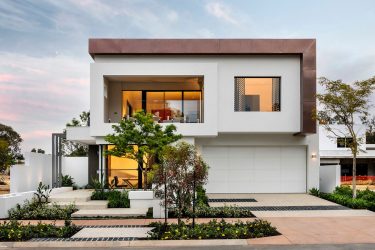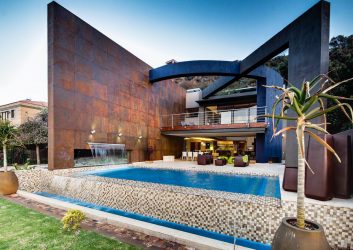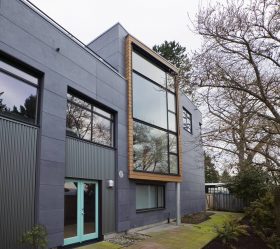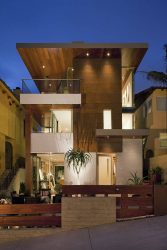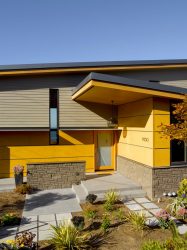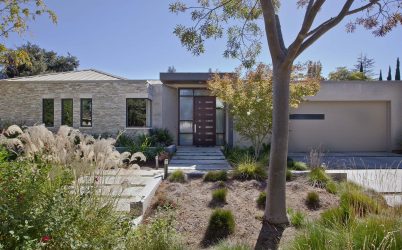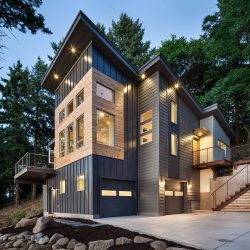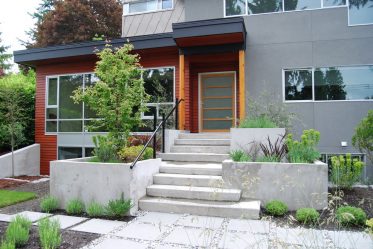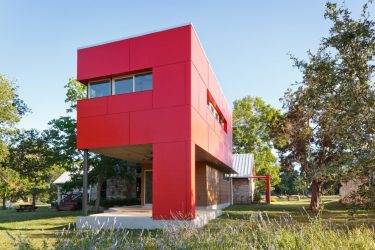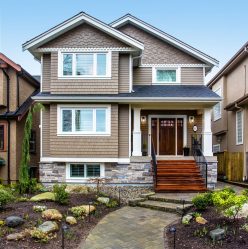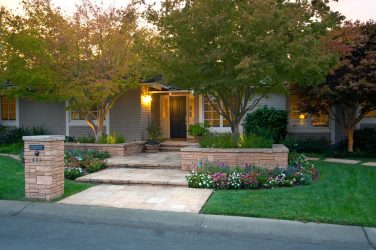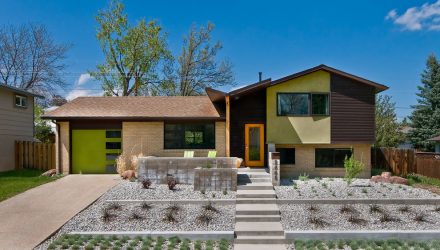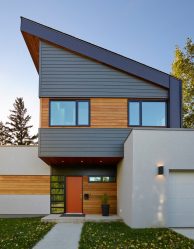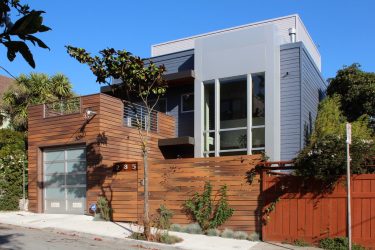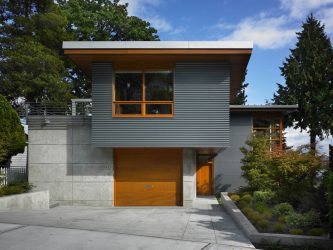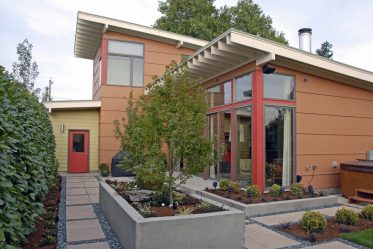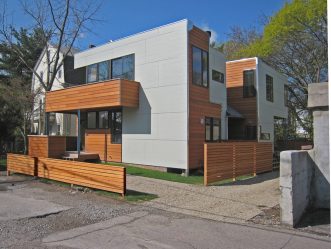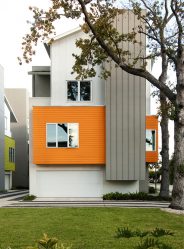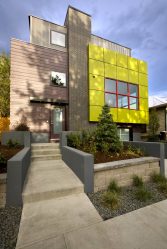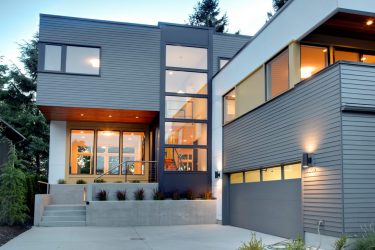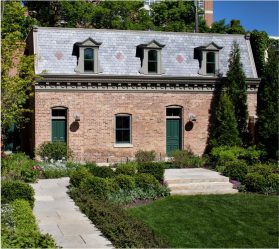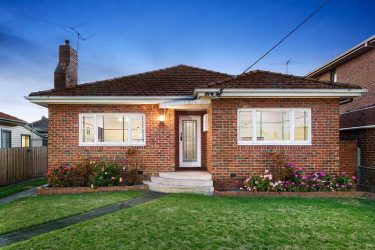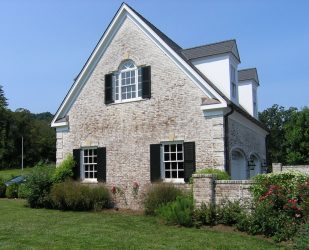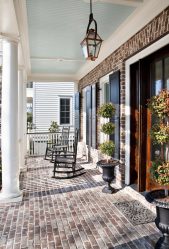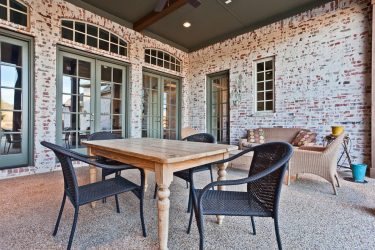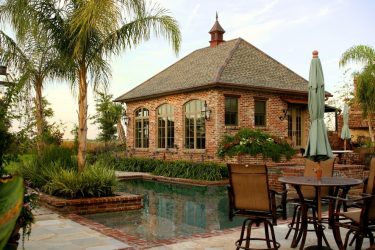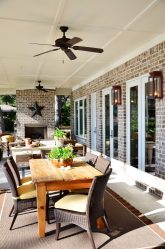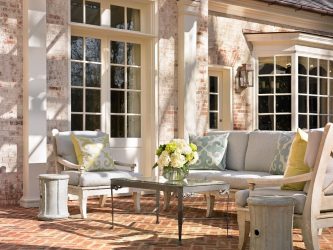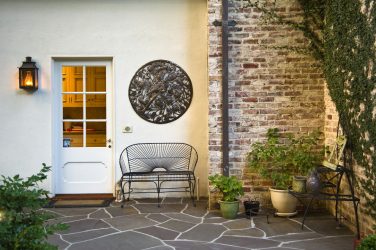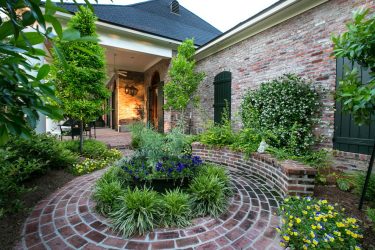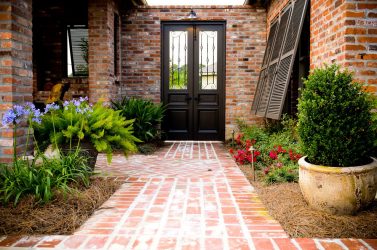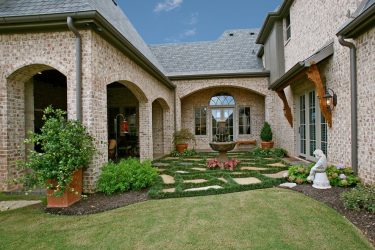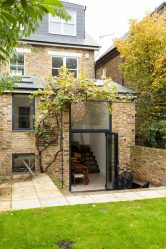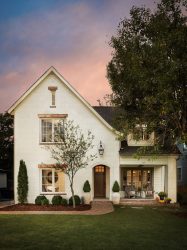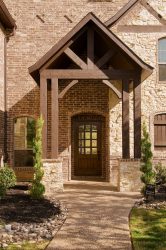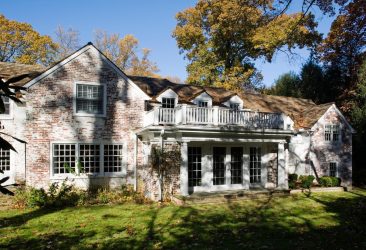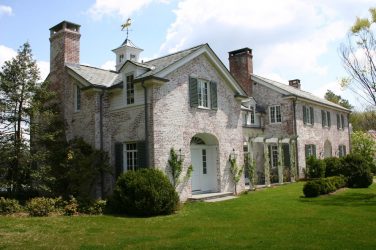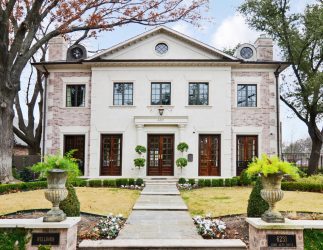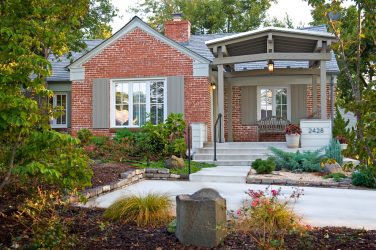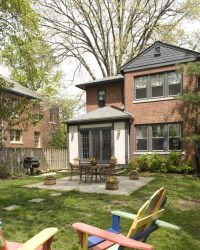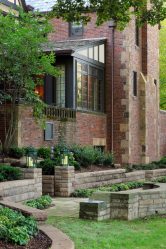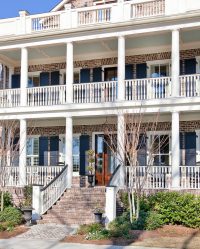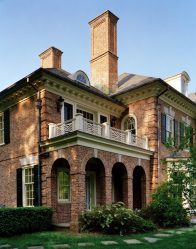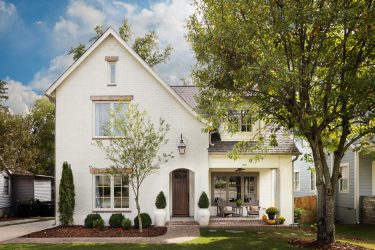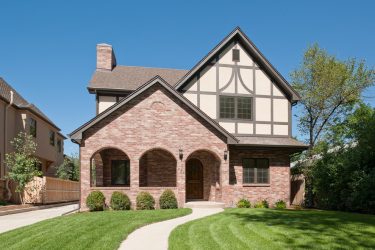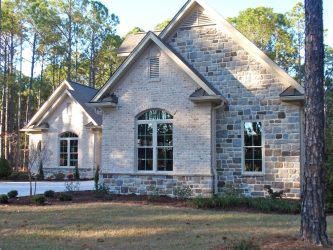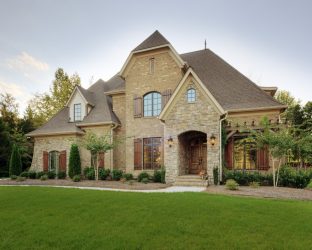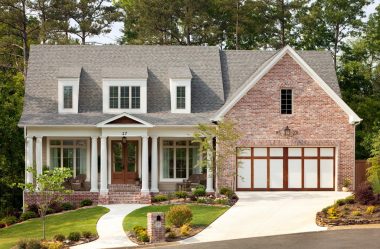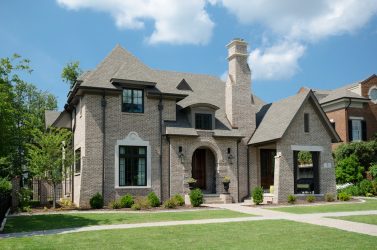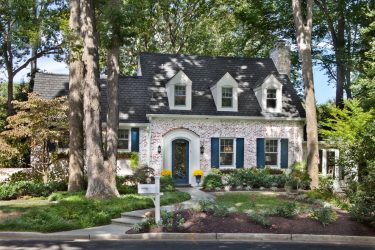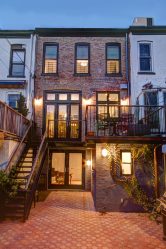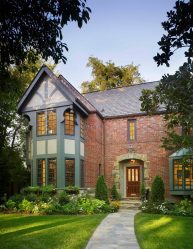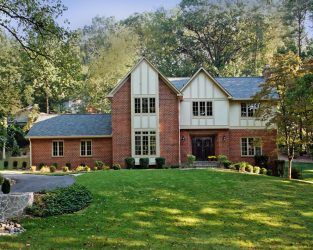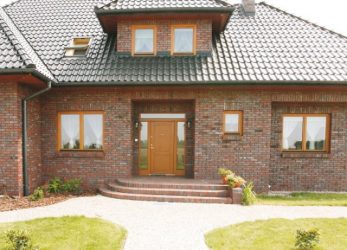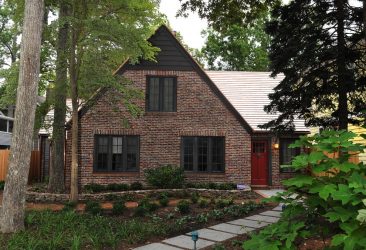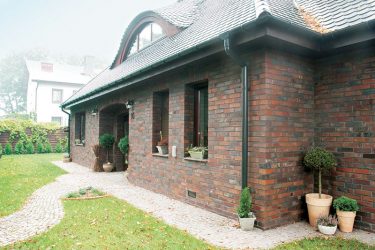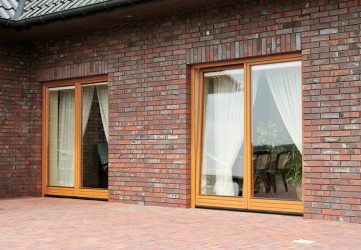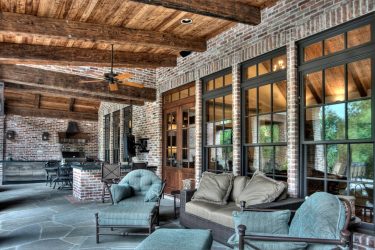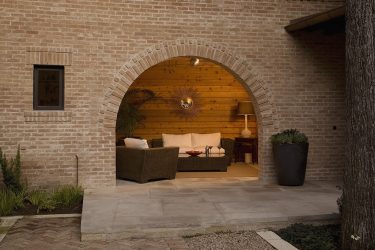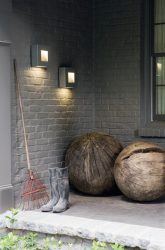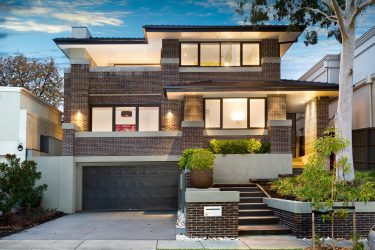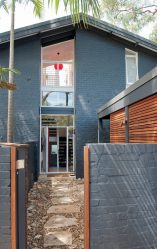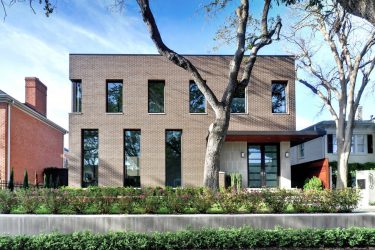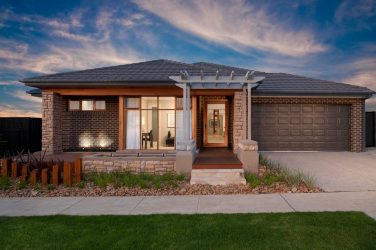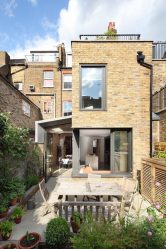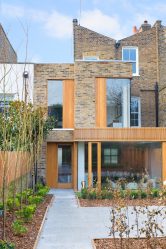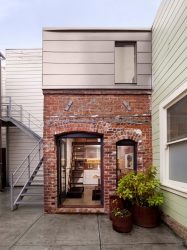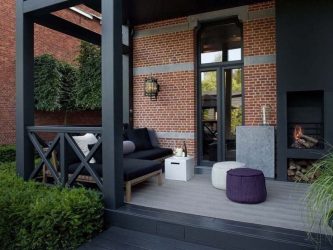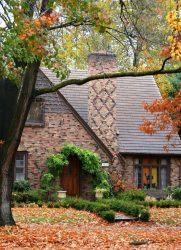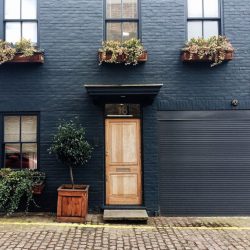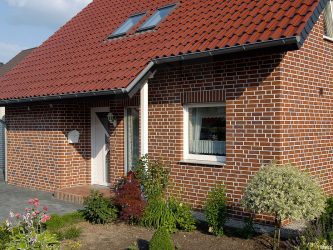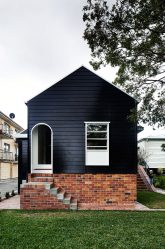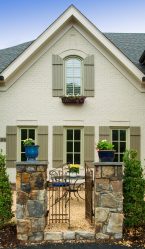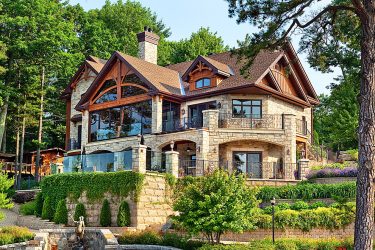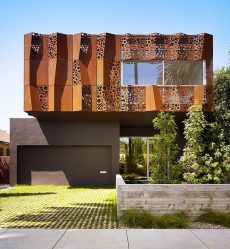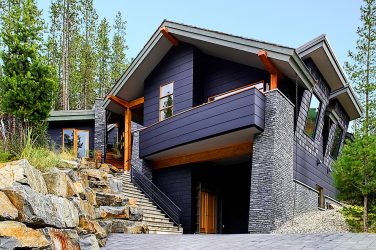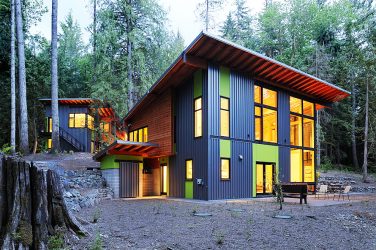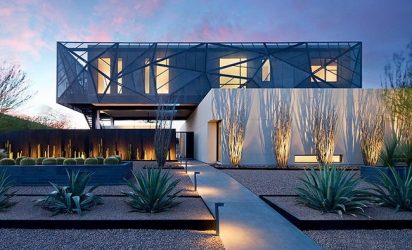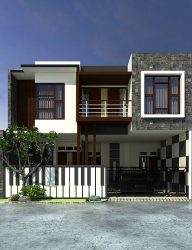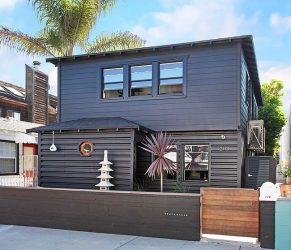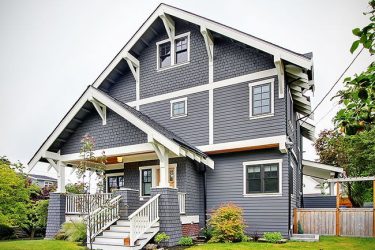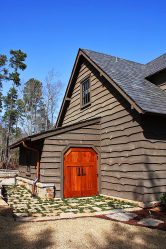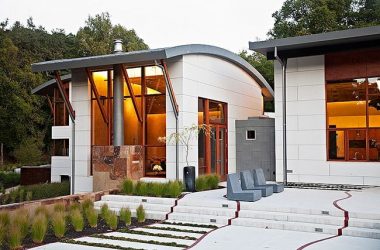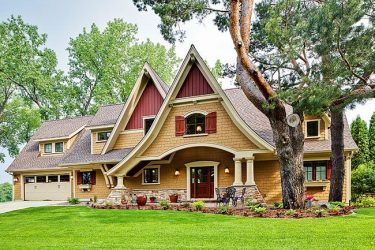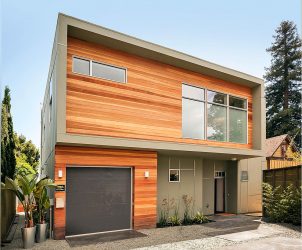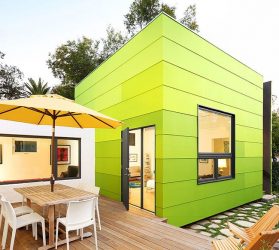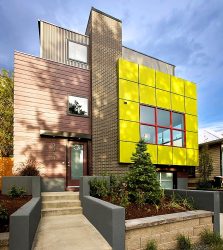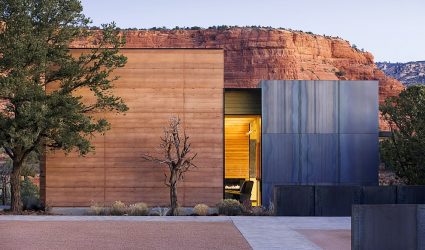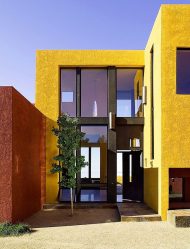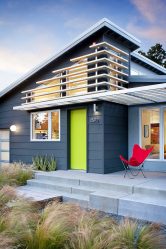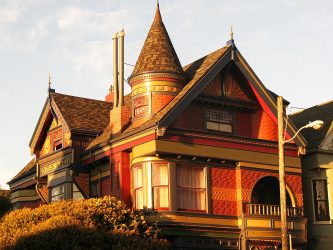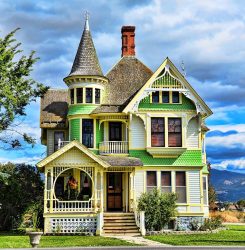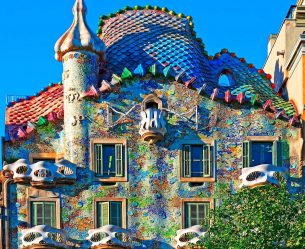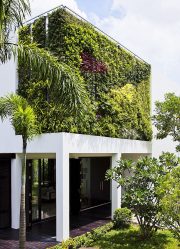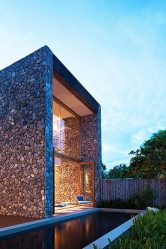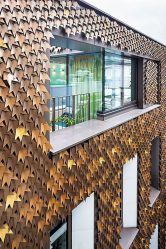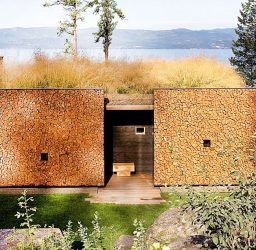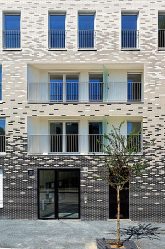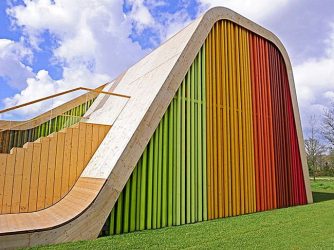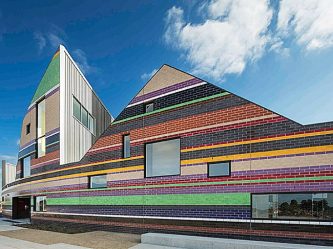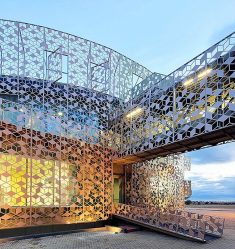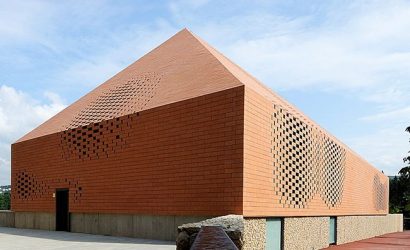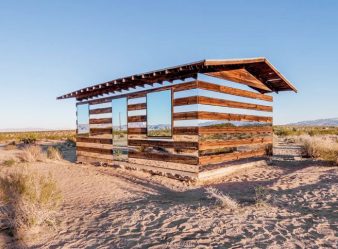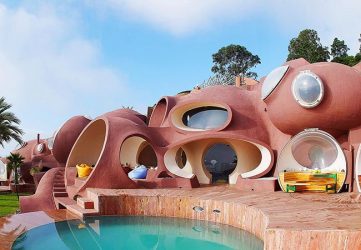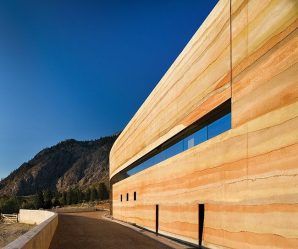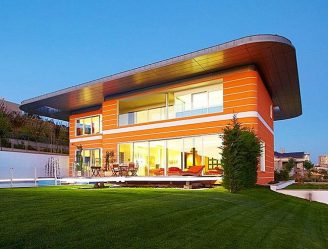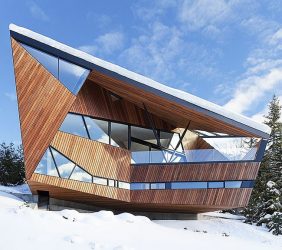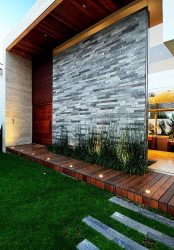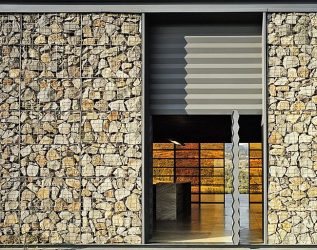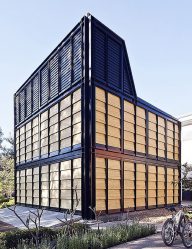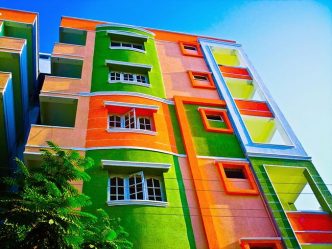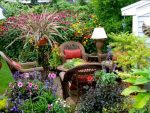
No matter how successful was the project of the house, its appearance largely depends on the facade cladding. What front materials for exterior decoration of the house and design options are used today?
Content:
Appointment of facade cladding
Successful finishing of any house outside gives it solidity. The outer layer, in addition to creating the exterior design of the building, should protect the walls of the house from rain, wind, snow and ultraviolet rays, and help preserve heat inside the building without letting in the cold.
To perform these functions, veneer material must meet the following requirements:
- be resistant to temperature extremes and moisture;
- have a low thermal conductivity;
- be environmentally friendly;
- have a low degree of ignition;
- have a non-critical weight, creating a load on the foundation, not exceeding the allowable;
- maintain color when exposed to UV rays.
These characteristics must be considered in addition to the attractiveness of the material.
return to menu ↑Types of facade cladding materials
A wide variety of materials with different sizes, origins, exterior texture and color shades makes it possible not to limit yourself in finishing the facade in any style. These include:
- facade decorative plaster;
- facing brick;
- artificial and natural stone;
- ceramic granite;
- siding;
- panels from different materials.
What are they?
return to menu ↑Facade plaster
The plastered facade is most common, since this method of external decoration of the walls and their protection from climatic destruction is the simplest. For modern types of plaster for facades, include: mineral, silicone, silicate and acrylic plaster.
return to menu ↑Mineral
Made on cement with additives of polymers, crumb, improving elasticity, its adhesion.
The disadvantage of mineral plaster is the color boundedness, which can be fixed by covering the surface with silicate paint. It penetrates well into the surface structure of the plaster, giving it the desired shade, strengthening it.
return to menu ↑Silicate and Silicone
Also refer to the mineral form of plaster, silicate - made on the basis of aqueous potassium glass with the addition of plasticizers, silicone - based on silicone resin.
return to menu ↑Acrylic
As a binder component contains a fine - dispersed mixture of acrylic resin or other synthetic polymers. Plaster has good vapor permeability, therefore, contributes to the loss of steam condensation inside the building.
With the help of various additives to the plaster, you can give a different texture to the surface of the facade walls, imitate the texture of various natural materials. For example, using mineral plaster, which includes quartz or limestone components with a grain size of about 1 mm, you can get a surface with a sandstone texture
Facing brick
A classic type of facade decoration is facing brick. According to the technology, the types are:
- Ceramic brick, produced in the form of bars made of clay with the addition of coloring pigments. It can have a smooth or embossed front surface, painted in different colors. Also products are hollow or solid. Products do not pass moisture, are resistant to loss of color with time and mechanical damage.
- Clinker brick made of special clay. Products after drying are subjected to firing at high temperature. Because of this, the density of the clinker is high. It is resistant to moisture, frost, has enviable strength. The surface of products in the form of a rectangle, trapezium, with rounded corners, etc., can be smooth, sanded or embossed.
- Pressed brick produced by pressing crushed shell rock with cement binder component, dyes, without the use of roasting. With this technology, maximum external similarity with natural stone is achieved, but unlike it, such a brick does not sufficiently retain heat.
Facing the facade with a brick gives the building a respectable solid look. Walls acquire additional strength, extending the life of the supporting structures.
Different colors make it possible to apply it in the design of various styles of facades.
The decoration of the facade facing brick can be done in different ways: in the horizontal, vertical arrangement of the elements, by alternating their orientation.
You can also use several variants of colors, most often used a combination of two colors: one is the main one, and the second is used to finish the facade elements: the perimeters of window openings or window pillars.
Finishing brick can be combined with another lining, for example with decorative artificial stone.
return to menu ↑Artificial and natural stone
For decoration of the facade used natural and artificial stone. Each of them has advantages. Natural stones look prestigious, giving the building a special energy.
The most valuable, durable are marble with granite. Besides them, dolomite, limestone, sandstone, shell rock, travertine and others are often used. Their use for full facade cladding is limited due to the price. These products are used for decorating window openings, entrance groups and other elements of buildings.
For continuous wall cladding they use mainly artificial stone, which successfully imitates natural materials and is much cheaper.
return to menu ↑Porcelain tile for the facade
Porcelain tiles are one of the best for finishing. The range of porcelain tiles is huge. In the sale of many varieties of this material for color and texture attribute.
The rainbow surface of the product looks impressive. There are also materials with imitation of wood and natural stone. Like all materials of baked clay, porcelain tile is distinguished by its strength, moisture resistance, resistance to temperature extremes, fire. It does not change color with time.
Low hygroscopicity of the material is the reason for installing the tile on the ventilated frame. The surface of porcelain tiles can be:
- matte;
- glossy (with a slight sheen);
- glazed;
- polished;
- partially polished (with matte and shiny areas);
- structured (with a pattern, relief, imitation of the texture of natural materials).
The tile is produced mainly in two sizes 30x30 cm and 80x120 cm.
If you want to visually increase the size of a building, use products with a polished surface to finish its facade.
return to menu ↑Facade decoration siding
Perhaps the most common material for finishing the facade in recent times is siding. This is due to its affordability, a huge variety of appearance.
By type of siding is:
- vinyl, made of PVC with imitation of natural wood, natural stone, brick, many other types of decor. It is corrosion resistant, does not rot, is cheap. The disadvantage is the fragility of products, susceptibility to melting;
- metallic, based on aluminum or steel. It is distinguished by its strength, resistance to temperature extremes, but corrosion can form if the surface is damaged. In addition, this siding is quite expensive.
Panels for facade decoration
Depending on the material used in the manufacture, there may be:
- Plastic;
- Fiber cement;
- Sip panels;
- Metal;
- Composite.
Plastic
Plastic cladding panels are often referred to as a type of siding, although this is not the case. Siding has a lath form and is made of PVC by extrusion, and plastic panels can have, besides the lath and other, more complex form, a relief texture, and they are made of polypropylene, which is much stronger than PVC.
The composition of the PP is also modifying components that improve its technological characteristics. The appearance of plastic, due to uneven edges, often imitates laying of brick or uneven stone. The docking of such elements is barely noticeable due to this shape and the hidden fastening system. Produce them in blocks containing several rows of elements.
return to menu ↑Fiber cement
Slabs made of concrete mixed with fiber additives, which represent a mixture of fiberglass and cellulose, are called fiber cement. Thanks to such additives, concrete is given a porous structure, which reduces the specific gravity of the material, making it flexible and resistant to deformations.
Get the plate by pressing rolled to the desired thickness of the mixture, pre-cut into portions. Then a protective decorative coating is applied to the surface.
With the help of products they often imitate facing with stone or brick in different colors. Produced in various shades of yellow, beige, white, other colors.The disadvantage of products is a significant weight, which limits the use of such plates.
return to menu ↑Vulture panels
Products made according to the type of expanded polystyrene sandwich located between the layers of fiberboard are called SIP - panels. This design gives ease of operation. It provides heat retention.
Outside the surface is covered with a protective layer. Due to the possibility of painting in different colors using CIP panels, you can give the facade any design style. You can also purchase ready-made imitations of natural textures.
return to menu ↑Metal panels
The metal construction consists of two external rigid layers, as well as an internal heat-insulating material made of expanded polystyrene or basalt mineral wool.
The outer sides consist of galvanized steel sheets coated with a polymeric protective layer. Such a coating can be made in a variety of colors, which allows you to expand the design possibilities of the facade of buildings.
Facing sandwich panels not only warms the walls of the house, gives them strength, but makes them perfectly smooth or gives a certain waviness, depending on the exterior design.
return to menu ↑Composite panels
The design of composite products is a kind of sandwich panels. Additionally, it also includes a protective layer, a decorative coating. May have a different kind of filler and coating.
Externally, they look like thin metal square or rectangular plates with a layer of heat insulator. The outer surface of the product has a paint coating, which may be of a different color. Elite product options have a laminated surface with an imitation of natural texture.
Different colors and textured performance allow you to use them for finishing any facade. The photo shows smooth monochromatic composite panels made of aluminum.
return to menu ↑Conclusion
Materials for cladding are selected based on the characteristics of the house and its style. The lined facade should also be combined with the surrounding landscape. Facade materials must also satisfy their technological parameters.
If you have chosen any of the above-described finishing products, then analyze whether it is suitable for facing your house.
Facade decoration
Material that will help determine the choice
